
What is the Toyota Supra GT?
WhichCar has given the Toyota Supra plenty of attention since it launched last year. However, the bulk of our spotlight has been focused on the top-dollar Supra GTS. What we have here is the far more accessible Supra GT.
Priced from $84,900 before on-roads, it’s a cool ten grand cheaper than the Supra GTS and thus a closer match to other RWD coupe rivals like the Chevrolet Camaro 2SS, Ford Mustang Bullitt – and even premium hyper-hatches like the Audi RS3.
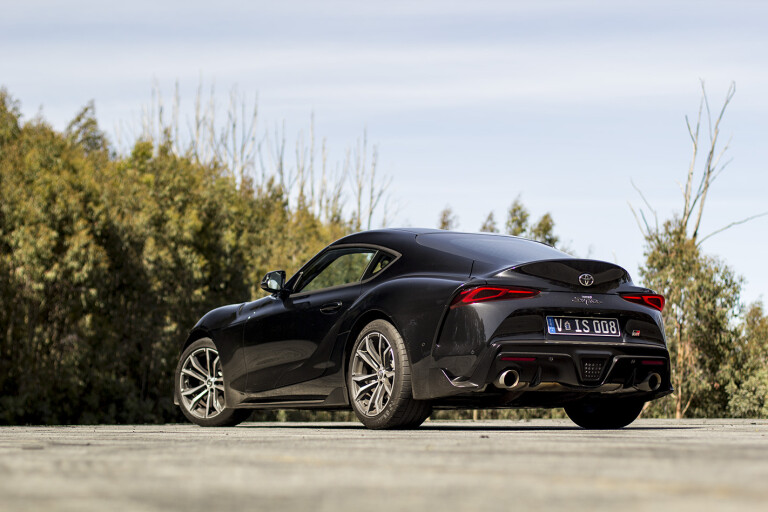
What's the Toyota Supra GT like to drive?
Cars like the Supra are all about the drive – considerations like space, comfort, practicality rank a very distant second place. Good thing then that the Supra GT is a truly sublime driver’s machine.
With a creamy-smooth inline six borrowed from BMW, finding enough thrust is never a problem. 250kW and 500Nm are the official numbers (and identical to the GTS), but it feels much stronger than that.
It’s also a powertrain that’s endowed with great flexibility – meaning you don’t need to wring its neck to extract its performance.
You have eight ratios to choose from the ZF-sourced automatic (alas, there’s no manual for the Supra), but whether you choose a low gear and high revs, or a high gear and low revs is entirely up to you – the engine’s thick torque band and yowling top-end power ensure either choice will result in swift progress.
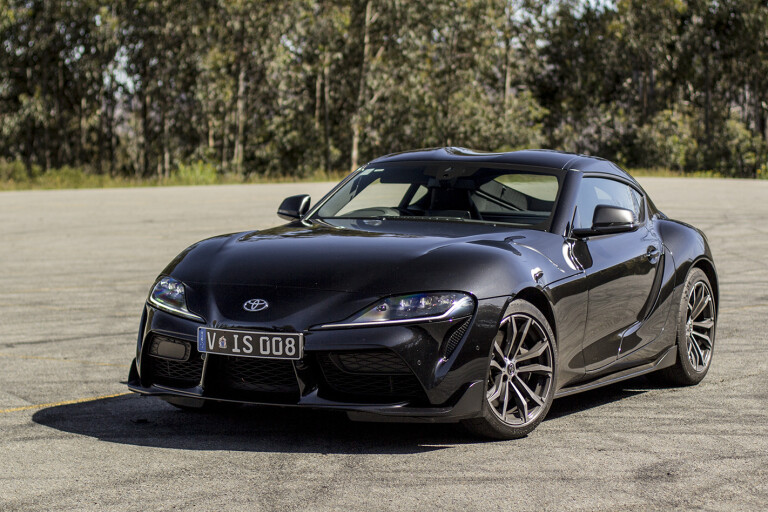
You can sharpen up the throttle response and gearchanges by selecting Sport mode, but leave the steering and suspension in their most comfort-oriented setting– your forearms and spinal column will thank you, especially if you’re not on a smooth racetrack.
Keeping the steering in its lightest setting also allows more information about the road surface to filter through to your fingertips, which is a must given the Supra doesn’t have the most communicative steering to begin with.
That’s at odds with the Supra’s stablemate, the ultra-talkative 86, and that stark difference is something of a surprise considering both cars share the same chief engineer: Toyota’s sports car specialist, Tetsuya Tada.
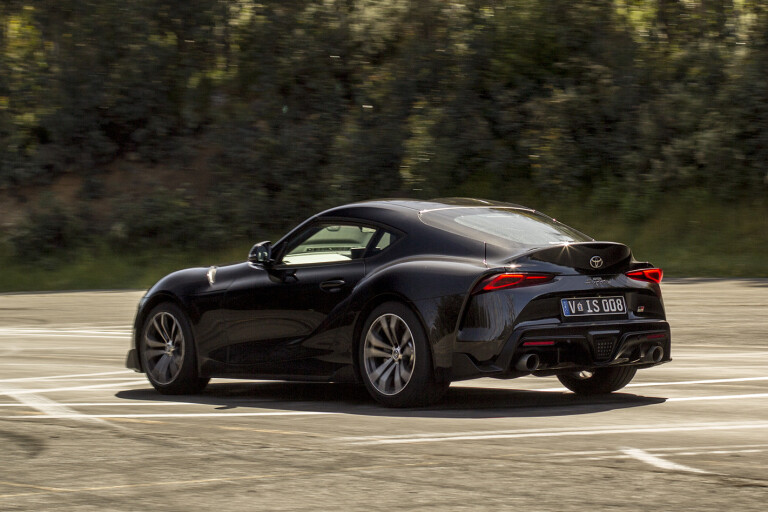
Even so, it makes for a corner-hunter. Find a quiet mountain road and revel in the Supra’s exceptional balance between acceleration, braking and cornering – it’s a supremely well-rounded sports car, and definitely not just a straight-line hero.
In fact, it turns sublimely, rotating eagerly under trail brake or under power without feeling as loose and drift-happy as the 86. The Supra boasts better sonics than even some BMW M cars too – surprising given the lineage – though at times we wished the volume of its overrun crackles and tasty straight-six harmony were turned up just a smidge.
Turn everything back to Comfort, and the Supra GT becomes quite friendly. If you’re looking for a sports car that can be daily-driven, the Supra certainly doesn’t baulk at that kind of driving.
With abundant torque, it’s quite amicable in traffic and its compact size makes it easy to thread down city streets.
The taller sidewalls of the GT’s tyres, which wrap 18-inch alloys rather than the GTS’s flashier 19s, don’t impart much of an advantage in ride comfort. We were expecting a different result, but to be fair to the Supra its urban ride isn’t especially brittle for a sports car, and it's certainly tolerable.
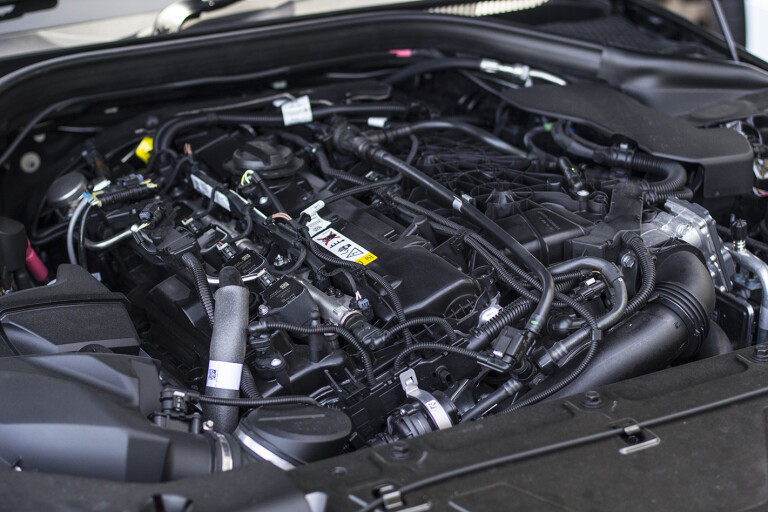
What's the Toyota Supra GT like to live with?
The Supra is a petite thing, more minuscule than you might expect. The fact that Toyota’s own 86, a sports coupe that sits a rung (or two) below the GR Supra on the performance scale actually packs in double the number of seats and a great deal more boot space speaks volumes.

But while the GT spec doesn’t lose out on performance compared to the GTS, it’s inside the cabin where the differences become obvious.
There’s no head-up display in the Supra GT, and that’s an impediment given how adept it is as piling on the speed. The digi-display in the instrument panel is precise, but just a bit too hard to keep an eye on when you’re moving swiftly.
There’s just plain black leather and rubber-faced pedals too, though the seats themselves are thankfully the same superbly-comfortable buckets as the GTS. The sound system also misses the punch of the GTS-specific 425-watt 12-speaker JBL hi-fi.

But to be honest, you’re still left with a well-equipped and premium-feeling cabin. Yes, besides that thin-rimmed steering wheel nearly all of the cabin furniture is cribbed from BMW’s parts catalogue (albeit arranged in a Toyota-specific layout), but to some that’s probably a desirable attribute.
One thing we don’t like is the weird holster that covers the wireless charge pad – surely there’s a better way of keeping a phone centred over an inductive loop?
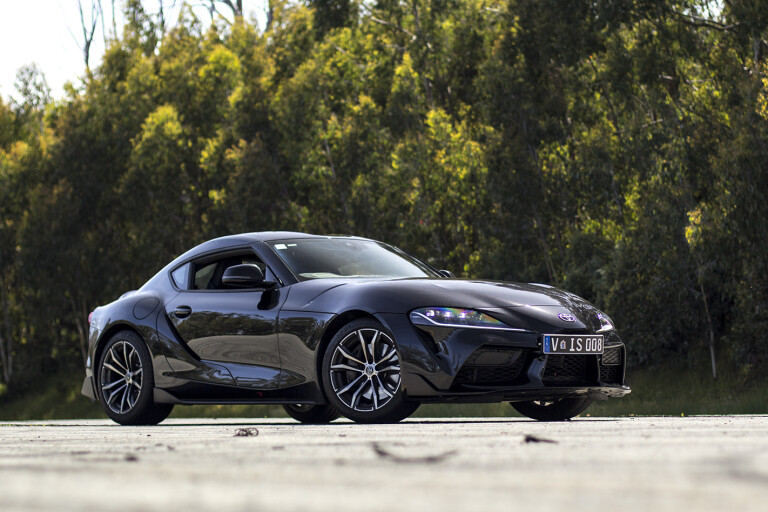
Other things we don’t like? That big, eardrum-thumping aerodynamic resonance that occurs when the windows are wound down would have to be at the top of the list, as it’s properly unbearable even at 70km/h.
The view out the back glass isn’t great either, but the standard-issue reversing camera compensates for that. Watch out for that low roof as you enter though, particularly if you’re on the tall side. Speaking of which, if you’re a big individual and a bit claustrophobic, you may not gel well with the Supra’s cockpit.

The boot? Besides having a weird aperture courtesy of that hourglass-shaped tailgate, it only gives you a very small 290 litres of cubic capacity. It’ll fit a set of golf clubs, but only just.
Is the Toyota Supra GT worth the money?
For some, this will be an easy question. For others, it’ll be a tougher equation to solve, and it all hinges on how you feel about the Supra nameplate.
If you were a Gran Turismo kid with a fondness for twin-turbo Toyota coupes you’ll probably already have your deposit down, but if you’re just looking for a long-bonnet two-door sports car and you’re brand-agnostic, then you might not see it in favourable terms against alternatives like the Ford Mustang GT or Nissan 370Z Nismo.

But one thing we can definitely say is that the Supra GT is arguably the Supra to get. You save a five-figure sum than if you sprung for the top-dog GTS, yet the car you receive is every bit as fast.
If you don’t mind missing out on a big-watt sound system, HUD and big wheels, then that decision should be a no-brainer.
Pros: Every bit as quick as the top-spec Supra, but for $10K less; performance is mega in its own right
Cons: Horrendous window-down buffeting; cosy interior; engine sound could be louder
Rating:4.5/5

COMMENTS